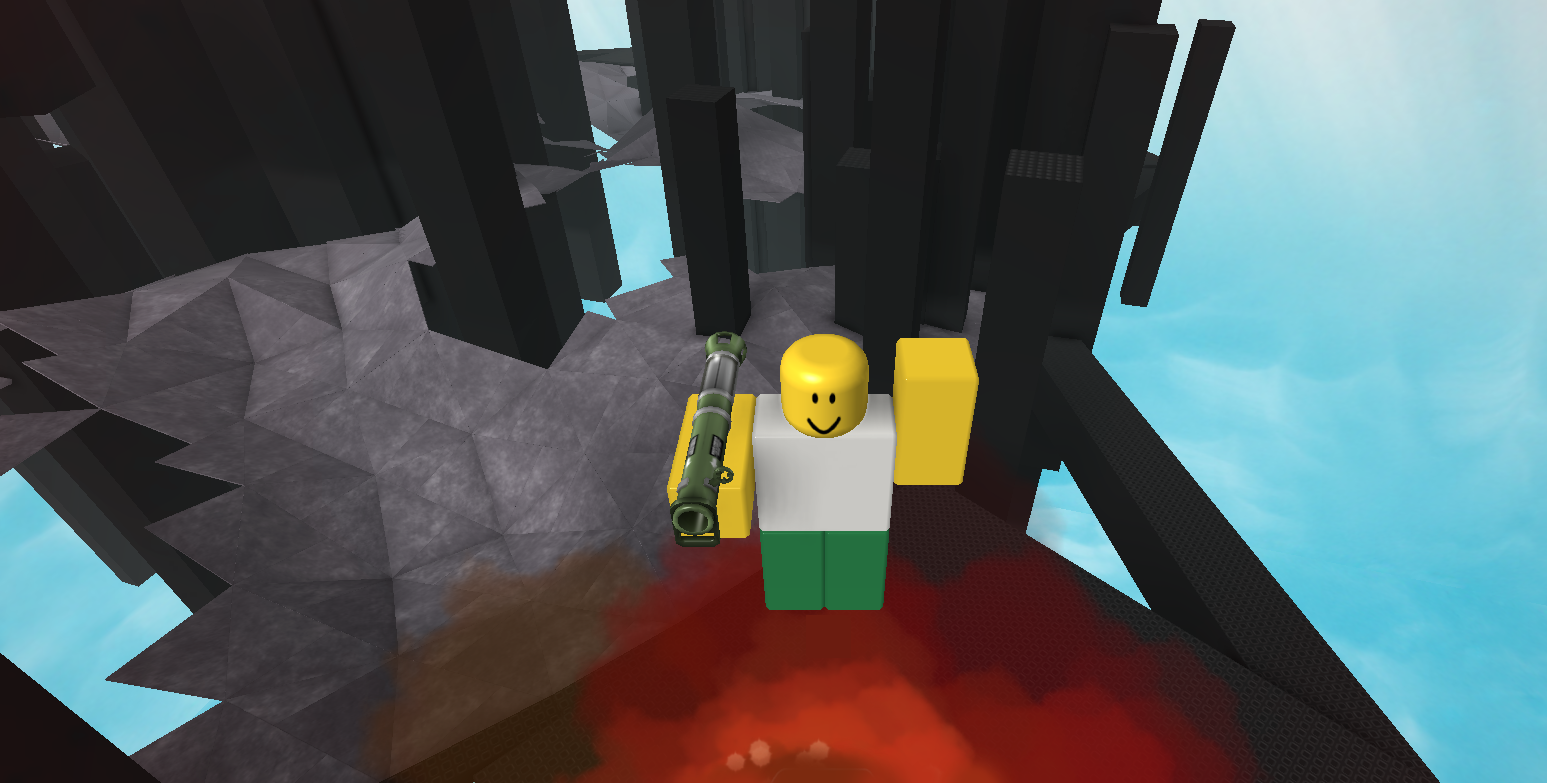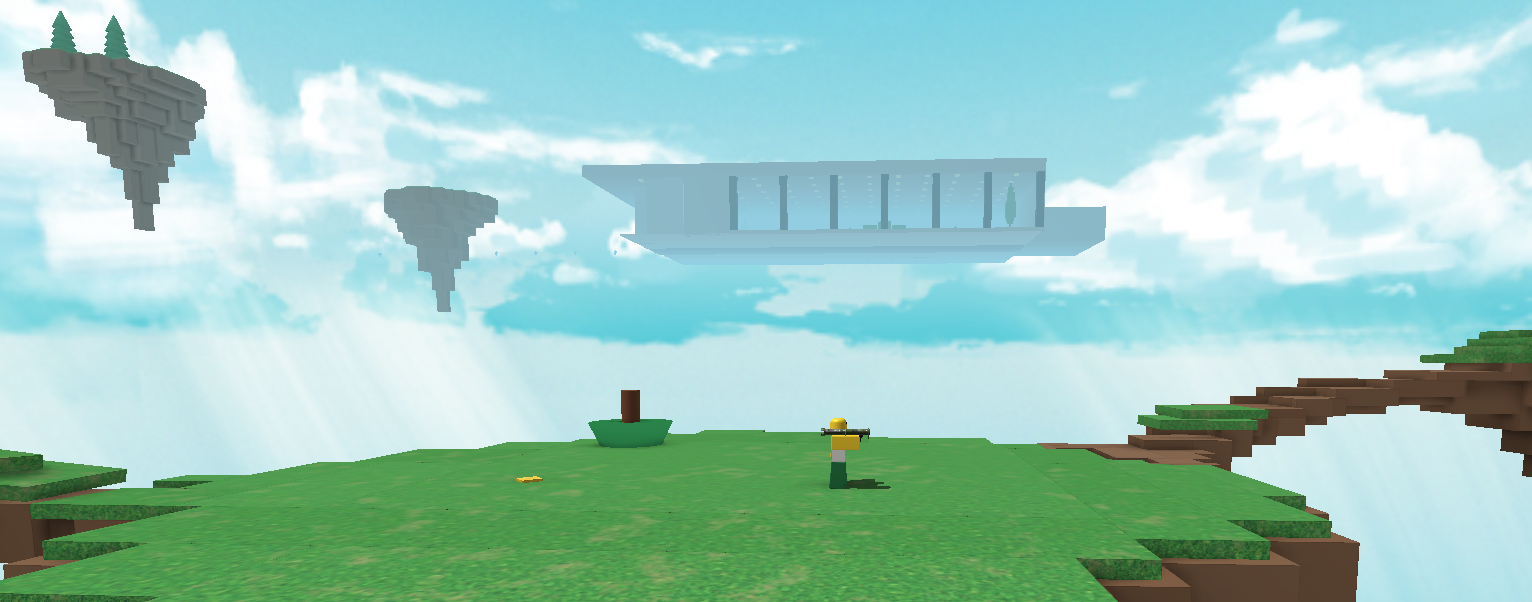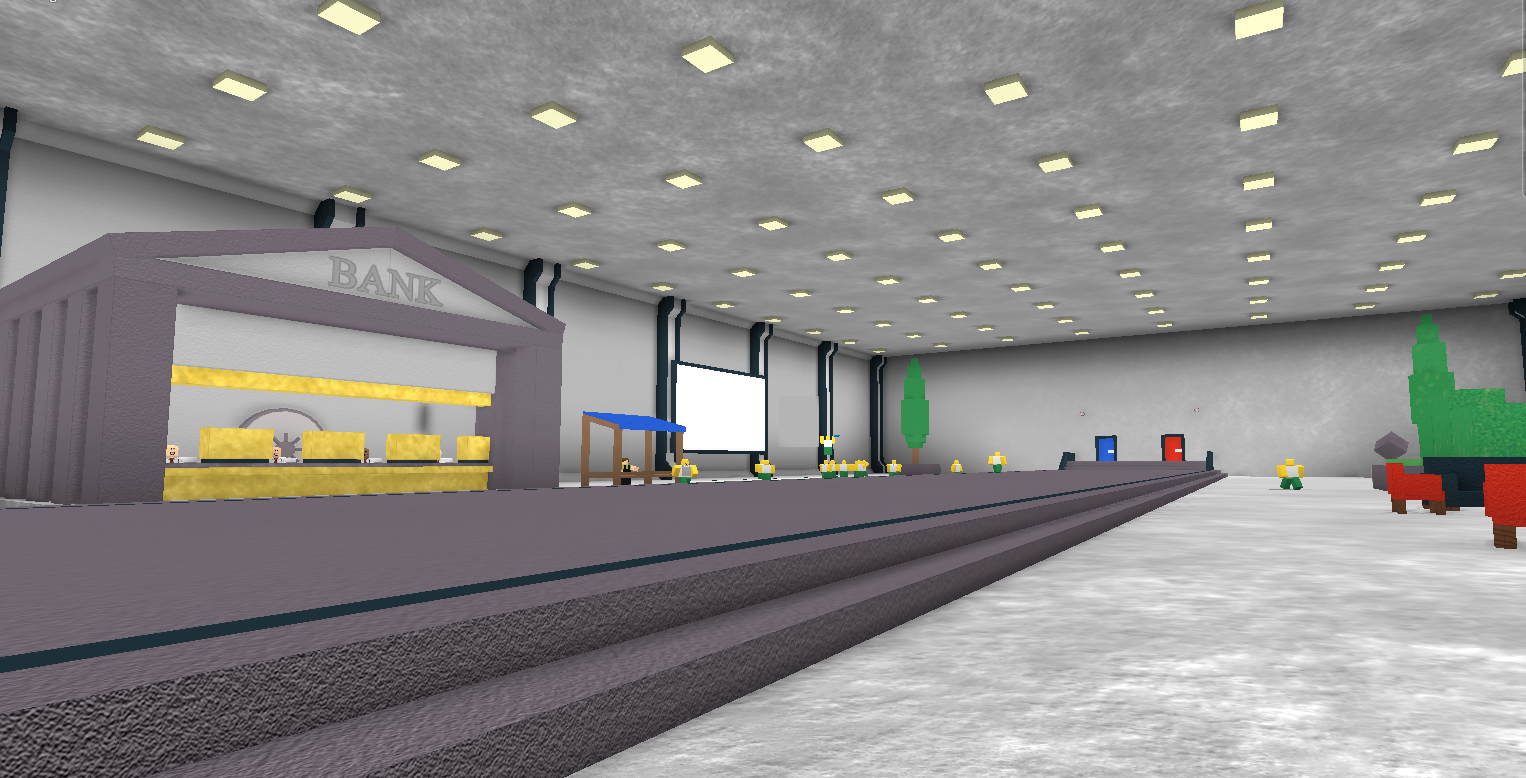Blog Archive
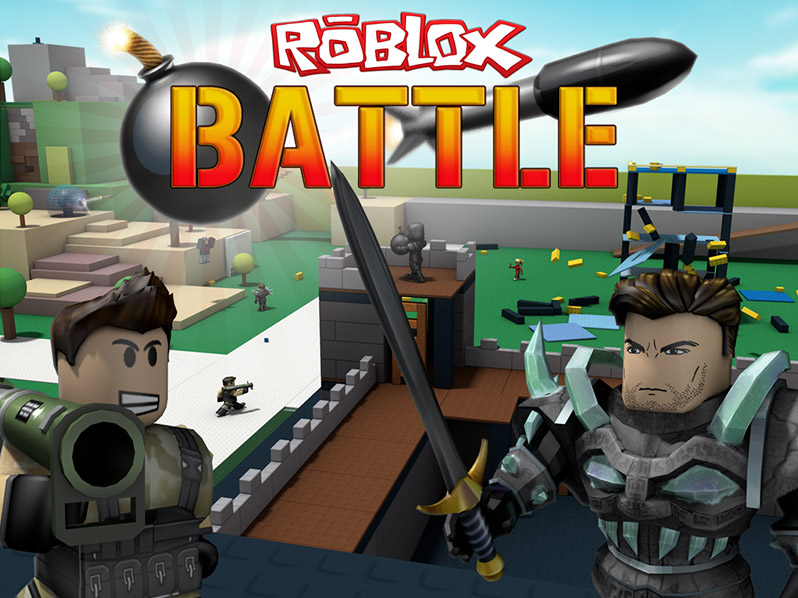 We’ve made some drastic improvements to every facet of ROBLOX Battle, our flagship internally developed combat title, over the last several weeks. New game modes, maps, character animations, and social interactions have turned Battle into an entirely different game. These changes are substantial for numerous reasons–not only do they revamp the ROBLOX Battle gameplay experience, they serve as a benchmark for future product enhancements. We went behind the scenes with the Content Team to find out how and why ROBLOX Battle has changed, starting with the core gameplay experience. We tapped Software Engineer Dan Healy, who’s been working closely on the game, to deliver the details.
We’ve made some drastic improvements to every facet of ROBLOX Battle, our flagship internally developed combat title, over the last several weeks. New game modes, maps, character animations, and social interactions have turned Battle into an entirely different game. These changes are substantial for numerous reasons–not only do they revamp the ROBLOX Battle gameplay experience, they serve as a benchmark for future product enhancements. We went behind the scenes with the Content Team to find out how and why ROBLOX Battle has changed, starting with the core gameplay experience. We tapped Software Engineer Dan Healy, who’s been working closely on the game, to deliver the details.
Gameplay
ROBLOX Battle has come a long way–what was once a simple combat game featuring six weapons and a single map has since evolved into a robust and layered multiplayer experience. When we initially decided to turn ROBLOX Battle into a deeper game, the Content Team got together and brainstormed game types that would be ideal for Battle. We started implementing new maps and modes, and have since renovated the entire core experience.
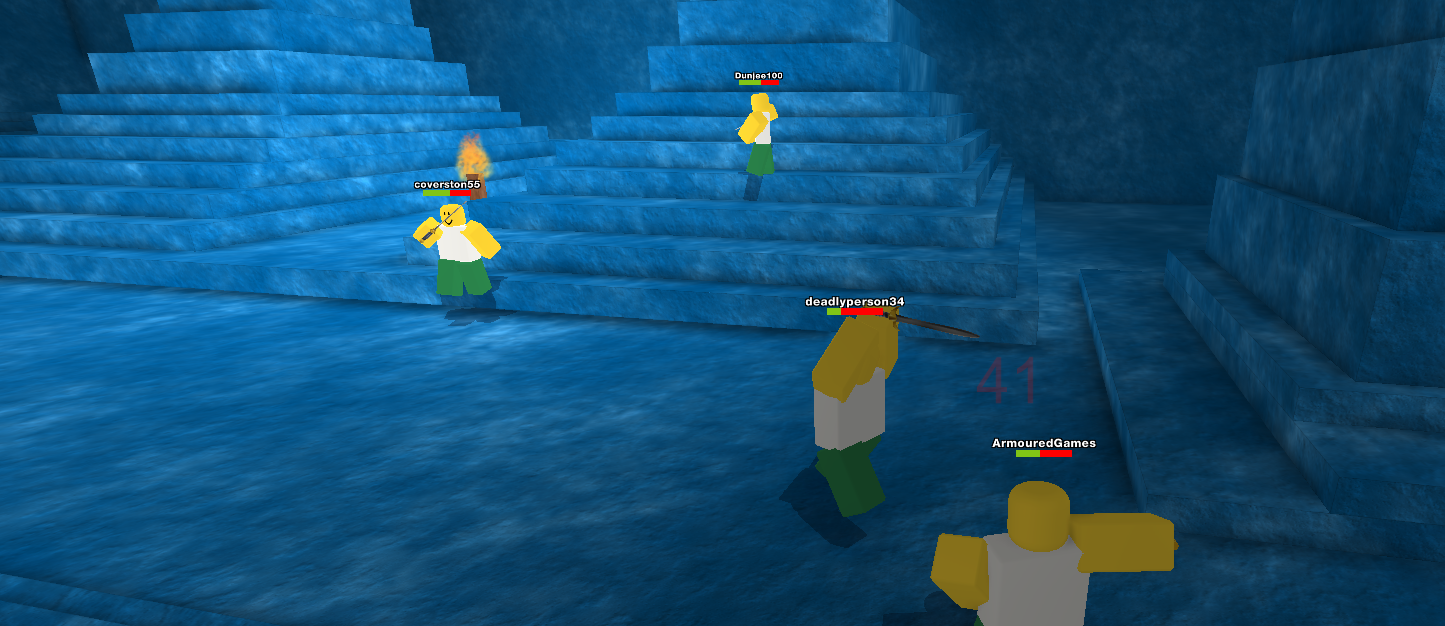
Did you know that your sword swings happens in sets of three, each blow doing more damage than the last? Pictured is the final of the three animations–the overhead blow–which does the most damage.
Each of the additional gameplay modes we implemented stemmed from a desire to make you the best ROBLOX Battler you can be. You see, every single weapon in ROBLOX Battle can be extremely effective in the right hands. The different game modes often force players to experiment with weapons they not be comfortable with initially. We decided early on that we didn’t want to make a game that focuses on leveling up your character; we wanted to make a game that focuses on leveling up your skill set. That’s why game modes like Burn Down, where you must score a knock out with every single weapon in your inventory, were created. To truly be a seasoned ROBLOX Battle warrior, you should be swapping between weapons constantly, and be totally comfortable with each one.
Though each game mode has differing objectives, playing them continuously will make you a well-rounded contender. Even Rocket Race, a mode where you rocket jump up a hill as quickly as possible, teaches you skills you can use in other modes. We’ve already seen seasoned Battle players utilizing rocket jumping in other modes of play to evade danger or quickly reach an elevated platform. The game modes also bring about strategy, particularly in a way that makes contenders much more aware of their environments. Sword Swept is a mode where teams square off against one another–one group armed with swords, another armed with brooms. The swords do more damage, but brooms move faster and can push opponents off edges. So if you’re an environment like Skylands, which features a ton of places to fall of the map, the strategy on both ends becomes very important. Sword fighters have to do their best to stay in wide open areas, while broom wielders often stay in groups near the narrow parts of the map, where they can knock opponents off with ease.
We had to keep a lot in mind when implementing these new game modes–from a gameplay perspective, we had to make sure that each one would be fun and work with each new map. Though we do let players vote for the maps and modes they want to play (more on this later), the available combinations are all ones we agreed work well together. Not every gameplay mode works with every map, so we test different configurations and make only the ones that offer a good gameplay experience available.
The Lobby and the Importance of Player Agency
Many updates to ROBLOX Battle revolve around the idea of “player agency,” which is the notion of choice given to players. We wanted to give Battlers a high degree of choice, which is reflected best in the lobby. We decided early on that we didn’t want to use GUIs to assist players in making choices; to the contrary, we wanted each major choice to be made in-game, and in real-time. The lobby was created to be a social environment, where players can vote on maps and modes, and observe other players’ votes, as well. Often, when players want a particular map to be chosen, they stand over the map and jump up and down (or plant their voting flags, if they have Builders Club). When a map is chosen, players actually walk toward two doors and choose a team. Though it may seem minor, this was a deliberate choice on our end, again, to observe the behaviors of players. We want players to question, “why are more people going in the red door? Do they have someone incredibly talented on their team?”
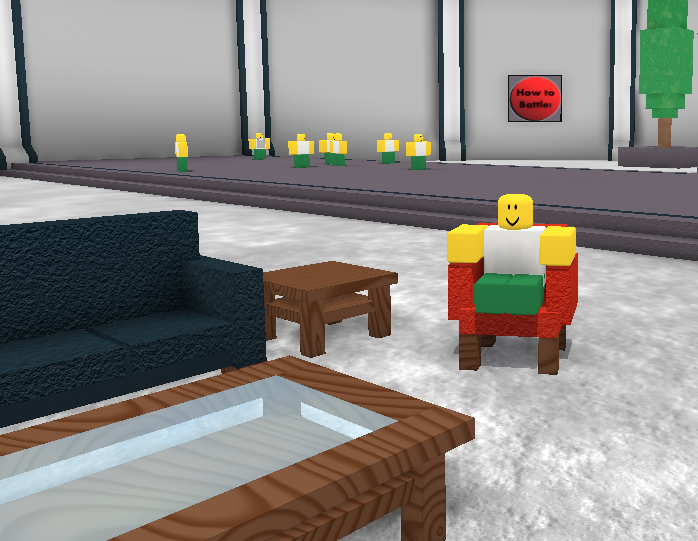 In addition, we wanted to build a lobby so players have a place of reprieve from the action. ROBLOX Battle features intense and competitive action, and we all agreed that after about three to five rounds, you get tired. Transporting to the lobby after three intense rounds of Battle allows you to take a breath, chat and vote before stepping back into the arena. Continuing to play is totally optional as well–if you want to sit out for three rounds, just take a seat in the chairs and jump in the next session. This was a deliberate choice we made so that players who want to take longer breaks can, without spawning into an active game where they’ll just get KO’d and harm their team’s score. By the same measure, they don’t have to leave the game that they’re in, as their seat in the lobby holds their spot in the server.
In addition, we wanted to build a lobby so players have a place of reprieve from the action. ROBLOX Battle features intense and competitive action, and we all agreed that after about three to five rounds, you get tired. Transporting to the lobby after three intense rounds of Battle allows you to take a breath, chat and vote before stepping back into the arena. Continuing to play is totally optional as well–if you want to sit out for three rounds, just take a seat in the chairs and jump in the next session. This was a deliberate choice we made so that players who want to take longer breaks can, without spawning into an active game where they’ll just get KO’d and harm their team’s score. By the same measure, they don’t have to leave the game that they’re in, as their seat in the lobby holds their spot in the server.
Creating the lobby, from a programming perspective, was extremely challenging. Many changes needed to be made to the code so that it could handle the fact that the lobby is there all the time. What do I mean by that? You may not have noticed, but the lobby can be seen from every single map in ROBLOX Battle. That’s because it’s always there; we just make it seem like you transport from the lobby to the map you’ve selected. This was challenging from a logistical standpoint as well–we had to re-write a lot of “Spawning” code in order to differentiate who winds up where, and whether they’re supposed to be transported to the lobby, or the game. Further complicating that was the idea of “Team Spawning”, which we never had to worry about previously.
We hope that builders are influenced by the lobby and what it represents–taking something that is normally explicitly stated (like a GUI) and turning it into something intuitive and interactive.
The Shop, The Bank, and Coins
In modern-day ROBLOX Battle, you earn currency by achieving objectives and can spend it on armor in the Shop. Creating the Shop allowed us to experiment with in-game purchasing, and come up with a technique that might be valuable to other game developers: publishing armor as models.
In the original version of the Shop, we would have to publish a whole new version of the place before newly added items would actually show up as available to players. To work around this, we decided to publish all the armor on ROBLOX.com as models. This allows us to update or add models at any time, without having to re-upload the game and nuke servers to force them to restart. This not only solved the issue, but it’s something that any developer can do.
Players are awarded coins to spend in the Shop when they complete the objectives of any given game mode. The coins are an intuitive way to encourage players to take certain actions. If you’re playing classic mode, the goal is to knock out as many players as possible. As such, you’re given coins for each knock out. Apply this concept to a more complicated sort of game–say, Rocket Race–and you’ll notice players are rewarded for standing on the top of the hill, alone (which is the goal of the game).
Saving coins is as easy as depositing them into the bank in the Lobby. There are currently four different types of armor you can purchase now that offer differing levels of protection, but we’re actively working on including new types of armor that actually have abilities (i.e. an armor that doesn’t necessarily offer protection, but explodes when you’ve been wiped out.) We’ll be adding all sorts of new types of armor in the coming weeks, so keep an eye out!
We’ll also be continuing our extensive look at the new ROBLOX Battle soon. Part two will focus on level design and implementation.
